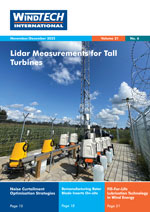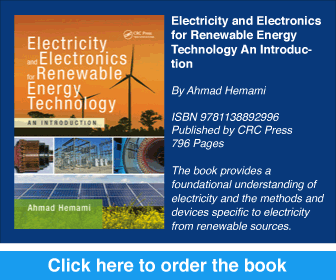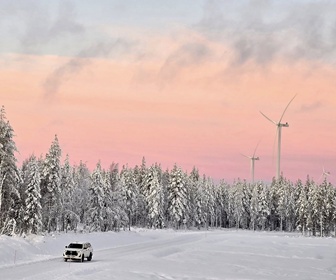- Category: Articles
 Effect of Climate Change on Global Wind Speed
Effect of Climate Change on Global Wind SpeedThe northwestern coastal area of Sri Lanka is identified as a region with substantial wind power potential. Its favourable geographical location and terrain contribute to higher wind power generation there. Presently, the Sri Lankan government is promoting wind power generation in the country. Long-term power generation predictions are required for evaluating the financial viability of wind power plants. Therefore, the impact of climate change on wind power generation is significant. Wind and climate variability are inextricably interconnected. However, although much attention is given to the potential effects of climate change on surface temperatures and precipitation, there has been comparatively minor discussion or analysis of changes in wind speed.
By Mahinsasa Narayana and Kethaki Wickramaarachchi, University of Moratuwa, Sri Lanka
- Category: Articles
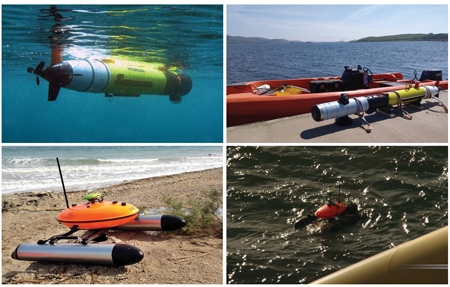 Autonomous Inspection of Offshore Turbine Marine Structures
Autonomous Inspection of Offshore Turbine Marine StructuresInspection of marine foundation structures and the immediate surrounding seabed is technically challenging, time-consuming and costly. Subsea inspection techniques draw more on the technology and procedures of other offshore sectors than on those of onshore wind. The inaccessibility of subsea structures means that maintenance checks are performed much less frequently than on the above-water components. Seabed scour is a stability issue around large pile/jacket structures, particularly in strong tidal flows. There are many potential risks associated with personnel and vessels working in close proximity to turbine structures for the extended periods needed for inspections. MarynSol is working to introduce viable, cost-effective solutions to the autonomous inspection of marine foundation structures, from seabed to splash zone.
By Jonathan Evans, Director, MarynSol, UK
- Category: Articles
 An Insight Into the Potential of Better Data
An Insight Into the Potential of Better DataWind farms are equipped with a SCADA system to monitor and collect data from the wind turbines. It is industry practice to collect data in 10-minute intervals and convert this data into specific statistics – the average, and in some cases, the maximum/minimum and standard deviation. Due to the dynamics of wind turbines, many underlying issues cannot be detected by an analysis of these statistics. This article discusses how the frequency of the dynamics of wind turbines is much higher than 10 minutes, and hence damaging behaviour and abnormalities cannot be identified with traditional SCADA data. The article also explores some examples of what could be achieved if data with a higher sampling rate is available.
By Carlos Gonzalez, Technical Director, Renewable Dynamics, Scotland
- Category: Articles
New Poul la Cour Tunnel at DTU Risø
 There are many tools available to the wind turbine engineer in the pursuit of the understanding and optimisation of wind turbine blade aerodynamics. One of the most important (and sought after) is a high Reynolds number wind tunnel, which is an invaluable tool for validating computational models and cost-effectively simulating complex aerodynamic problems. In April 2018, the Technical University of Denmark (DTU) inaugurated the Poul la Cour Tunnel at its Risø campus. The tunnel is one of the largest university-owned tunnels in the world and is dedicated to wind energy research. Together with the Danish aerodynamic upgrade company Power Curve, DTU is carrying out fundamental research into the impact of blade contamination on turbine performance and the mitigation impact of aerodynamic devices such as vortex generators.
There are many tools available to the wind turbine engineer in the pursuit of the understanding and optimisation of wind turbine blade aerodynamics. One of the most important (and sought after) is a high Reynolds number wind tunnel, which is an invaluable tool for validating computational models and cost-effectively simulating complex aerodynamic problems. In April 2018, the Technical University of Denmark (DTU) inaugurated the Poul la Cour Tunnel at its Risø campus. The tunnel is one of the largest university-owned tunnels in the world and is dedicated to wind energy research. Together with the Danish aerodynamic upgrade company Power Curve, DTU is carrying out fundamental research into the impact of blade contamination on turbine performance and the mitigation impact of aerodynamic devices such as vortex generators.By Nicholas Gaudern, Chief Technical Officer, Power Curve, Denmark
- Category: Articles
Optimising Wind Turbine Performance and Availability with Augmented Intelligence
Recently the term ‘predictive maintenance’ has received much attention across many industries. Perhaps this is due in part to the synergies with other rapidly developing areas of technology such as artificial intelligence, cloud computing, the internet of things, and big data analytics.
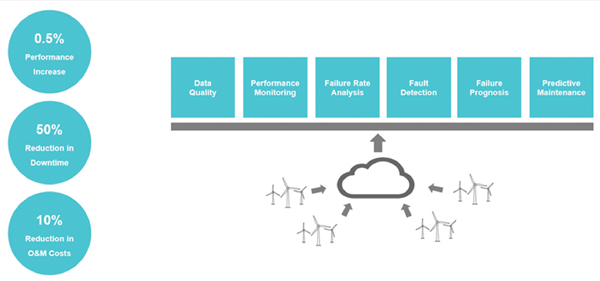 It is certainly not all hype; in mostareas of industry where operational costs represent a significant proportion of the overall life-cycle cost of a product, a strong business case can be made for the introduction of predictive maintenance. Wind energy can certainly benefit from such innovations, and perhaps the potential reduction in the overall cost of energy would be the final push that is needed to bring the industry through grid parity and beyond. Although the use of condition monitoring in wind turbines is nothing new, recent technical innovations provide the framework that is needed for a more complete implementation of predictive maintenance.
It is certainly not all hype; in mostareas of industry where operational costs represent a significant proportion of the overall life-cycle cost of a product, a strong business case can be made for the introduction of predictive maintenance. Wind energy can certainly benefit from such innovations, and perhaps the potential reduction in the overall cost of energy would be the final push that is needed to bring the industry through grid parity and beyond. Although the use of condition monitoring in wind turbines is nothing new, recent technical innovations provide the framework that is needed for a more complete implementation of predictive maintenance.

By Christopher Gray, CEO, i4SEE TECH, Austria
- Category: Articles
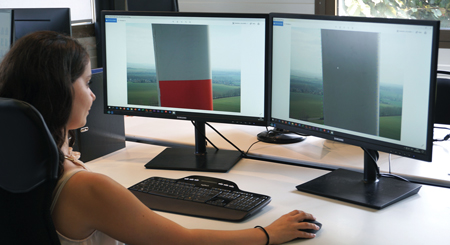 Drone-Based Technology Platforms
Drone-Based Technology PlatformsIn this article, Sulzer & Schmid Laboratories, a Swiss company developing technology solutions for the inspection of wind turbine rotor blades, explains how drone-based technology platforms suitable for large-scale, multi-gigawatt blade inspection campaigns require a specific set of characteristics that will provide the level of scalability and deployability needed to succeed.
By Tom Sulzer, CEO and Co-Founder, Sulzer & Schmid, Switzerland
- Category: Articles
Maximising Blade Performance Through Aerodynamic Optimisation
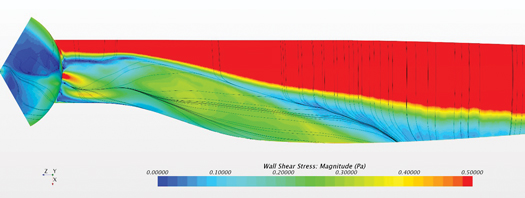 Every wind turbine blade can be optimised. This is a bold statement but it is based on a number of factors that apply in varying degrees to all turbines: surface contamination and erosion, limitations and assumptions of standard design tools, design compromises to meet time/cost deadlines, adherence to standard wind classifications, and continual development of new technology. How can we go about optimising a blade that has already been installed? This article will describe the different technical methods and solutions available to extract more energy from a rotor, enabling wind turbines to deliver more revenue to their owners and to contribute more to global carbon reduction targets.
Every wind turbine blade can be optimised. This is a bold statement but it is based on a number of factors that apply in varying degrees to all turbines: surface contamination and erosion, limitations and assumptions of standard design tools, design compromises to meet time/cost deadlines, adherence to standard wind classifications, and continual development of new technology. How can we go about optimising a blade that has already been installed? This article will describe the different technical methods and solutions available to extract more energy from a rotor, enabling wind turbines to deliver more revenue to their owners and to contribute more to global carbon reduction targets.By Nicholas Gaudern, Chief Technical Officer, Power Curve, Denmark
Use of cookies
Windtech International wants to make your visit to our website as pleasant as possible. That is why we place cookies on your computer that remember your preferences. With anonymous information about your site use you also help us to improve the website. Of course we will ask for your permission first. Click Accept to use all functions of the Windtech International website.



